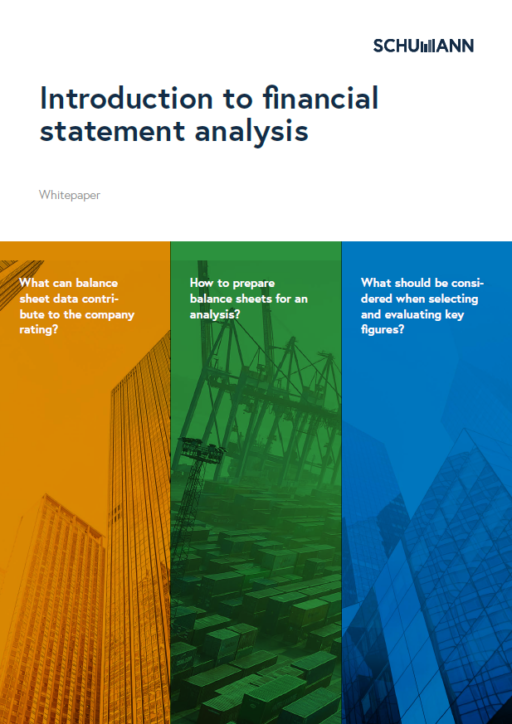What Is Financial Statement Analysis?
Balance sheet analysis, or analysis of annual financial statements, is a method for determining the economic situation of a company. In the risk management of banks, financial service providers, companies and credit insurers, it is a frequently used means of assessing the creditworthiness of (potential) customers or other business partners.
Balance sheet analysis examines the annual financial statements of companies that draw up balance sheets, i.e. in addition to the balance sheet itself, the profit and loss account, the notes to the financial statements and any management report are also part of the examination.
Their results reflect the status quo of the current asset and income situation and enable a forecast of the future development of the analysed company - among other things, of the expected liquidity, which plays a significant role for lenders.
Translated with www.DeepL.com/Translator (free version)
Financial Statement Analysis: How Meaningful Is It?
Annual financial statements are prepared by companies themselves within the framework of the applicable legal situation. The underlying laws and regulations specify to a certain extent how annual financial statements are to be structured.
Nevertheless, they leave companies a great degree of freedom, which leads to the fact that the interpretation and comparability of annual financial statements is not given without a preparation of the figures. In addition, companies usually use all the possibilities they have to present their figures in the most positive light possible.
For external financial analysts it is therefore sometimes difficult to get a true picture of the economic situation of a company on the basis of the published annual financial statements. Nevertheless, balance sheet analysis, if applied correctly, makes a valuable and indispensable contribution to determining creditworthiness.
To Whom is Financial Statement Analysis of Concern?
Stakeholders of financial analysis are banks, financial service providers, suppliers (i.e. all potential creditors), credit insurers, rating agencies, credit agencies or even franchisors or association group headquarters who are interested in the economic situation of their members and make decisions on the basis of findings from this.
What Has to Be Considered When Analysing Financial Statements?
The analysis of annual financial statements is indispensable for creditworthiness checks across all sectors. But what can balance sheet data tell us and what are the limits of their informative value? How are balance sheets prepared for analysis? And what should be considered when selecting and evaluating key figures?
Download our free white paper and get the answers to the most important questions about customer financial statement analysis as a risk assessment tool.
White Paper Content
- Why balance sheets?
- How to prepare balance sheets?
- How to make the right choice of key figures?
- How to evaluate the key figures?
Getting Started to Financial Statement Analysis

Risk Management Software for Your Industry


